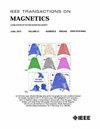All-Optical Switching: A Path to Recording Technology Beyond HAMR
IF 2.1
3区 工程技术
Q3 ENGINEERING, ELECTRICAL & ELECTRONIC
引用次数: 0
Abstract
After 20 years of development, heat-assisted magnetic recording (HAMR) is now entering production. Given the timescale associated with HAMR development, it seems important to consider the possibilities for future replacement. HAMR is limited by the phenomenon of “backswitching” which, in the limited write fields available to the HAMR process, leads to a reduction of switching probability: a reduction which becomes more pronounced as the grain size continues to decrease. An interesting possibility for technology beyond HAMR is all-optical switching (AOS), which is a field-free option thereby removing the need for an inductively generated head field. Since the AOS is driven by exchange, the effective fields involved are extremely large and the backswitching is dramatically reduced leading to more reliable switching. We review the underlying physics of the backswitching in terms of a “quadrilemma” and show how this is overcome by AOS. We also outline recent processes designed to switch ferromagnets and the usage of combined AOS/spin torque to achieve deterministic rather than the toggle switching exhibited by ferrimagnets. The conclusion is that any materials’ design must ensure a sufficiently large effective field to overcome backswitching.全光交换:超越HAMR的记录技术之路
经过20多年的发展,热辅助磁记录技术(HAMR)已进入生产阶段。考虑到与HAMR开发相关的时间尺度,考虑未来更换的可能性似乎很重要。HAMR受到“反向切换”现象的限制,在HAMR过程可用的有限写入场中,这种现象导致切换概率降低:随着晶粒尺寸的继续减小,这种降低变得更加明显。除了HAMR之外,一个有趣的可能性是全光开关(AOS),这是一个无场的选择,因此不需要电感产生的头场。由于AOS是由交换驱动的,因此所涉及的有效场非常大,并且大大减少了反向交换,从而提高了交换的可靠性。我们从“四困境”的角度回顾了反向切换的基本物理原理,并展示了AOS是如何克服这一问题的。我们还概述了最近设计用于切换铁磁体的工艺,以及使用组合的AOS/自旋扭矩来实现确定性而不是铁磁体所表现出的拨动开关。结论是,任何材料的设计都必须确保足够大的有效场来克服反向开关。
本文章由计算机程序翻译,如有差异,请以英文原文为准。
求助全文
约1分钟内获得全文
求助全文
来源期刊

IEEE Transactions on Magnetics
工程技术-工程:电子与电气
CiteScore
4.00
自引率
14.30%
发文量
565
审稿时长
4.1 months
期刊介绍:
Science and technology related to the basic physics and engineering of magnetism, magnetic materials, applied magnetics, magnetic devices, and magnetic data storage. The IEEE Transactions on Magnetics publishes scholarly articles of archival value as well as tutorial expositions and critical reviews of classical subjects and topics of current interest.
 求助内容:
求助内容: 应助结果提醒方式:
应助结果提醒方式:


